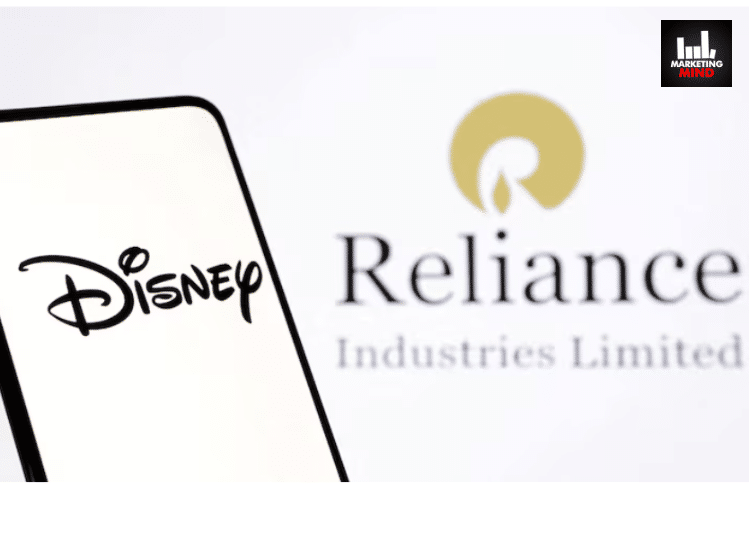A major entertainment extravaganza is set to unfold for Indian audiences, with the Rs 70,350 crore merger between Reliance Industries (RIL) and The Walt Disney Company’s India operations nearing completion. The highly anticipated joint venture, likely named “JioStar,” is poised to go live imminently.
According to reports, the new company had to officially begin operations as early as today. It has, however, been delayed by a few more days. Earlier, RIL stated in its regulatory filing that the merger is expected to be finalised by the end of the third quarter of this fiscal year.
Mukesh Ambani-led RIL and its affiliates will acquire a 63.16% stake in the merged entity, which will encompass two streaming platforms and 120 television channels. The Walt Disney Company will retain a 36.84% stake in the merged entity.
As the merger sets the foundation for India’s largest entertainment powerhouse, let’s look back on the journey that led to this milestone and explore what this joint venture promises for the future.
How the $8.5 billion mega merger took shape
The merger story began in December 2023, when reports surfaced about Reliance Industries and the Walt Disney Company exploring a potential merger of their entertainment businesses in India. Reports circulated about discussions for a joint venture, with Reliance possibly acquiring a majority stake.
These speculations were confirmed on February 28, 2024, when The Walt Disney Company and Viacom18, owned by RIL, signed a binding agreement to combine their media operations in India. The deal aimed to integrate Viacom18 and Star India, consolidating their entertainment assets.
However, on August 20, 2024, the Competition Commission of India (CCI) raised concerns about the merger, particularly around control of cricket broadcast rights, a key segment in the Indian media market. Reportedly, Reliance and Disney had already answered around 100 questions about the merger and proposed selling fewer than 10 television channels to address potential antitrust issues and expedite approval. Yet, CCI’s notice suggested these concessions might not be enough.
On August 28, CCI finally approved the $8.5 billion merger, subject to certain voluntary modifications.
The companies have voluntarily agreed that following their merger, the combined entity will not bundle TV and OTT ad slots for IPL, ICC, and BCCI cricket rights until the current rights period concludes.
Major leadership changes and key exits
The merger process between the two companies has brought about multiple leadership changes. Recently, Nita Ambani, chairperson of Reliance Foundation, and Akash Ambani, chairman of Reliance Jio Infocomm, joined the board of Viacom18, a joint venture between Reliance Industries (RIL) and Bodhi Tree Systems.
James Murdoch, co-promoter of Bodhi Tree Systems, and Mohammed Ahmed Al-Hardan, head of technology, media, and telecom at the Qatar Investment Authority (QIA), also joined the Viacom18 board alongside Ambanis. Al-Hardan represents the Bodhi Tree on the board. Jyoti Deshpande, President of Media and Content Business at RIL, and Shuva Mandal, Partner at Anagram Partners, have also joined the board.
The merged entity will likely have Viacom18’s current broadcast and digital cluster CEOs, Kevin Vaz and Kiran Mani, taking on roles as Co-CEOs.
The company has also experienced several significant departures. Ferzad Palia is set to move on from his role as Senior Executive Vice President (EVP) and Business Head- JioCinema at Viacom18 Media. As per reports, he will stay with the company during the transition to ensure a smooth handover.
Disney Star’s Distribution Head, Gurjeev Kapoor, is likely to quit the company. As per the reports, Kapoor has opted not to join the Viacom18 and Disney Star joint venture, instead choosing to pursue an entrepreneurial path in the entertainment sector.
K Madhavan also stepped down as the Country Manager and President of Disney Star after a 15-year tenure. Disney Star’s legal head, Mihir Rale, and Sajith Sivanandan, who led Disney+ Hotstar, have both decided to part ways with the company.
Here’s what to expect from the mega merger
The merger will create a large media juggernaut with 108+ channels (Star India has 70+ TV channels in 8 languages whereas Viacom has 38 TV channels in 8 languages), two large OTT apps (JioCinema and Hotstar) and two film studios (one each of Reliance and Disney India).
Earlier, some industry leaders said that the merged entity may retain only one of the two OTT platforms- either Disney+ Hotstar or JioCinema. They emphasised the importance of focusing on a single app to enhance consumer experience across all content categories, rather than maintaining two separate streaming platforms.
On the other hand, other industry players highlighted that as far as the two platforms are concerned, each of them has content of its own and the merged entity will have content from both platforms, although they might differentiate it within the platform. This would mean the new platform will enjoy patronage of both the original platforms and hence have an increased reach. However, a lot depends on how Disney and RIL price the same.
While the merger will lead to the formation of a mega monolith and therefore lead to monopolistic outcomes, the advertisers will still have a level playing ground across mediums and if not sports, there’ll still be other media touchpoints in the multi fragmented ecosystem of ad mediums.
In discussions with Marketing Mind, industry leaders also pointed out that the merger of JioCinema and Disney+ Hotstar presents a significant challenge for global OTT platforms, given India’s market’s strong preference for bundling and sensitivity to pricing.
On the TV side, it is expected to capture a market share of around 40 to 45%, while on the digital side, the market share could range from 30 to 35%. This dominance presents considerable potential for further scaling and will likely lead to numerous business synergies.
While losses are expected to persist due to sports properties, transitioning to a subscription-based revenue model over the medium to long term will likely reduce these losses. Overall, this shift is expected to have negative implications for the ecosystem but will positively impact the efficiency and functioning of the companies involved, they added.
















